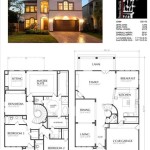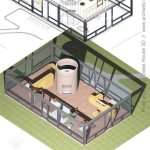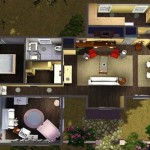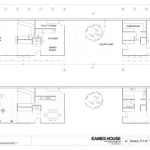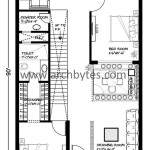Simple Bird Feeder Plans: Free Printable Options for Bird Enthusiasts
Attracting birds to a garden or outdoor space can be a rewarding experience, bringing nature closer and offering opportunities for observation and enjoyment. One of the most effective ways to achieve this is by providing a reliable food source through bird feeders. Constructing bird feeders at home not only offers a cost-effective solution but also allows for customization to suit specific needs and preferences. Numerous free printable bird feeder plans are readily available online, catering to various skill levels and design preferences. This article aims to explore the benefits of using these plans, outlining the different types of bird feeders that can be built, and providing guidance on how to effectively utilize free printable plans to create functional and attractive bird feeding stations.
Benefits of Using Free Printable Bird Feeder Plans
Opting for free printable bird feeder plans offers several advantages. The primary benefit lies in the cost-effectiveness. Purchasing pre-made bird feeders can be expensive, especially if multiple feeders are desired. Utilizing free plans and readily available materials significantly reduces the financial outlay, making bird feeding accessible to a wider audience.
Another key advantage is the opportunity for customization. Pre-made feeders often come in standard sizes and designs, which may not perfectly align with individual preferences or the specific needs of the bird species one is attempting to attract. Free plans allow for modifications to size, shape, and material, enabling the creation of a feeder that is tailored to the surrounding environment and the target bird population. For example, a larger feeder can be built to accommodate more birds, or a specific type of feeding port can be incorporated to deter squirrels.
Furthermore, building a bird feeder from a plan can be a satisfying and educational project. It provides an opportunity to develop practical skills in woodworking, construction, and design. This can be particularly beneficial for families with children, offering a hands-on learning experience that fosters creativity and problem-solving abilities. The process of building a feeder also promotes a deeper appreciation for nature and the importance of providing habitat for birds.
Finally, using free printable plans offers immediate access to instructions and designs. Unlike purchasing plans, which may involve waiting for delivery, these plans are readily available for download and use. This allows for immediate project commencement and avoids delays in setting up a bird feeding station.
Types of Bird Feeders and Suitable Plans
The selection of a bird feeder type depends largely on the types of birds the user desires to attract and the physical characteristics of the intended installation location. Different feeder designs are optimized for different types of bird food and offer varying levels of protection from the elements and other animals.
Platform feeders, also known as tray feeders, are among the simplest designs. They consist of a flat surface, usually with a raised edge to prevent seed spillage. Platform feeders are versatile and can accommodate a wide variety of bird species, as they offer easy access to the food. Free printable plans for platform feeders typically involve straightforward construction using wood or plastic. The plans often detail the dimensions of the platform, the height and design of the edges, and the method for attaching the feeder to a post or hanging it from a branch.
Hopper feeders, also referred to as house feeders, feature a container that holds a larger quantity of birdseed. The seed is dispensed gradually into a tray or feeding area as the birds consume it. Hopper feeders are beneficial for providing a continuous supply of food, reducing the frequency of refills. Free printable plans for hopper feeders usually involve more complex construction than platform feeders, requiring precise cuts and assembly to ensure proper seed dispensing. The plans often include instructions for building a roof over the feeding area to protect the seed from rain and snow.
Tube feeders are cylindrical feeders with multiple feeding ports spaced around the body. These feeders are particularly effective for attracting smaller birds, such as finches and chickadees, while deterring larger birds and squirrels. Free printable plans for tube feeders may involve using PVC pipe or clear plastic tubing. The plans typically specify the diameter and length of the tube, the size and spacing of the feeding ports, and the method for attaching perches below the ports.
Suet feeders are designed to hold suet cakes, which are a high-energy food source particularly beneficial during the winter months. Suet feeders are usually made of wire mesh or plastic cages that prevent birds from carrying off large pieces of suet. Free printable plans for suet feeders are relatively simple, often involving cutting and shaping wire mesh or plastic to create a cage that can be hung from a tree or post. The plans may also include instructions for adding a roof or other protective features.
Nectar feeders, also known as hummingbird feeders, are specifically designed to provide nectar to hummingbirds. These feeders typically feature small feeding ports that only hummingbirds can access, preventing bees and other insects from consuming the nectar. Free printable plans for nectar feeders often involve using plastic bottles or glass jars, along with specialized feeding ports that can be purchased separately. The plans usually provide instructions for assembling the feeder, mixing the nectar solution, and cleaning the feeder regularly to prevent mold growth.
Effectively Using Free Printable Bird Feeder Plans
To ensure the successful construction and utilization of a bird feeder based on a free printable plan, several key steps and considerations must be addressed. These include selecting the appropriate plan, gathering the necessary materials and tools, following the instructions carefully, and choosing a suitable location for the completed feeder.
The first step is to carefully review and select a plan that aligns with the user's skill level and the desired type of feeder. It is important to assess the complexity of the design, the required tools and materials, and the clarity of the instructions. Plans that include detailed diagrams, step-by-step instructions, and a comprehensive materials list are generally easier to follow. Beginners may want to start with simpler platform or suet feeder plans, while more experienced builders can tackle more complex hopper or tube feeder designs.
Once a plan has been selected, the next step is to gather all the necessary materials and tools. The materials list provided in the plan should be meticulously followed, ensuring that all required items are obtained. This may include wood, screws, nails, wire mesh, plastic tubing, and various hardware components. The tools required will depend on the complexity of the project but may include a saw, drill, screwdriver, hammer, measuring tape, and safety glasses. It is crucial to use high-quality materials that are weather-resistant and non-toxic to birds.
Following the instructions carefully is paramount to the successful construction of the bird feeder. Each step should be executed accurately, paying close attention to the dimensions and angles specified in the plan. It is advisable to double-check measurements and cuts before proceeding to the next step. If any part of the instructions is unclear, it is beneficial to consult online resources or seek assistance from experienced builders.
Selecting a suitable location for the bird feeder is crucial for attracting birds and ensuring their safety. The feeder should be placed in a location that is easily accessible to birds but protected from predators, such as cats and hawks. It should also be sheltered from the elements, such as strong winds and heavy rain. The location should be easily visible from a window, allowing for convenient observation of the birds. It is important to clean the feeder regularly to prevent the spread of disease and to ensure that the food remains fresh. The area around the feeder should also be kept clean to prevent the accumulation of seed hulls and droppings.
Furthermore, consider the type of bird seed that will be used in the feeder. Different bird species have different dietary preferences, so selecting the appropriate seed mix can attract a wider variety of birds. Sunflower seeds, millet, and nyjer seeds are popular choices that appeal to many different species. It is also important to provide a source of fresh water for the birds, especially during dry periods. A bird bath or shallow dish of water can be placed near the feeder to provide a convenient source of hydration.
Finally, it is essential to monitor the bird feeder regularly and make any necessary adjustments. This may involve refilling the feeder with seed, cleaning it to prevent the spread of disease, or relocating it if it is not attracting birds. By carefully following these steps and considerations, bird enthusiasts can effectively utilize free printable bird feeder plans to create functional and attractive bird feeding stations that will provide enjoyment and benefit to both birds and humans.

Diy Bird Feeder Material List Construct101

Build A Bird Feeder Free Plans Construct101

Build A Bird Feeder Free Plans Construct101

Free Bird Feeder Plans Easy Step By Instructions

Diy Bird Feeder Plans Simple Homemade Free Printables Monograms Design Tools Patterns Projects

Woodsmith Cedar Bird Feeder Plan

Free Bird Feeder Plans

Diy Bird Feeder 4 And 20 Minutes To Make 100 Things 2 Do

53 Free Diy Bird House Feeder Plans That Will Attract Them To Your Garden

Diy Homemade Wine Bottle Bird Feeder Plans Free Printables Monograms Design Tools Patterns Projects


